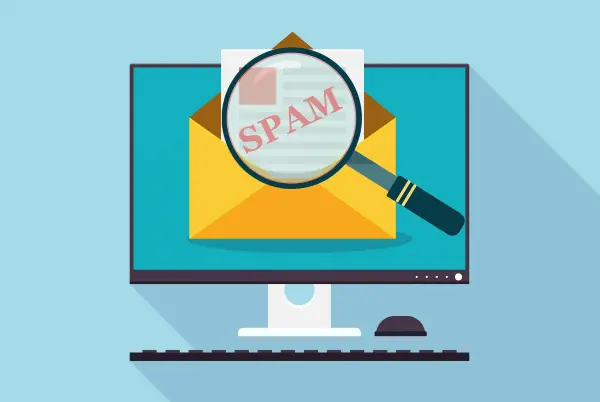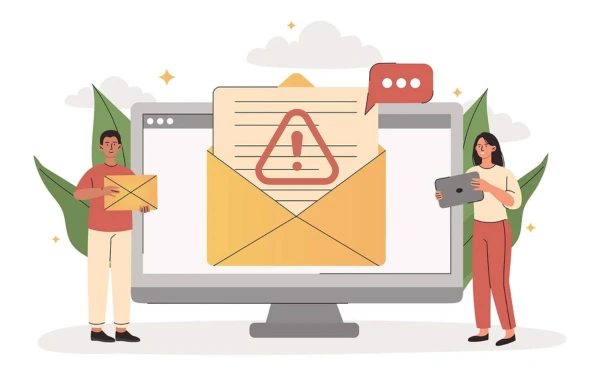Yes, Boost Inbox is designed to cater to businesses of all sizes and industries.

In today’s digital age, email outreach is still one of the most effective ways to connect with potential customers, partners, and influencers. However, if your emails are landing in the spam folder, all your efforts can go to waste.
The truth is, the spam folder is where emails go to die. And with spam filters getting smarter and more aggressive, it’s easier than ever for your perfectly legitimate outreach email to be flagged.
In this guide, we’ll dive into why emails go to spam, how spam filters work, and-most importantly-what you can do to stay in the inbox.
Understanding Spam Filters
Spam filters are automated systems used by email providers (like Gmail, Outlook, Yahoo, etc.) to protect users from unwanted or harmful emails.
These filters analyze every part of your email-from your subject line and content to your sending IP address and authentication records. If anything looks suspicious, the email is marked as spam or junk.
There are multiple types of filters at play:
- Content filters check the actual message for spammy language or formatting.
- Blacklist filters block emails from known spam-sending IPs or domains.
- Header filters scan the email's metadata (subject, sender info, etc.).
- Engagement filters monitor user behavior like opens, replies, and deletes.
Common Reasons Outreach Emails Go to Spam
1. Poor Sender Reputation:
Your domain and IP reputation matter a lot. If you’ve ever been reported for spam, or if you’re using a shared IP with other users who spam, your emails could be at risk.
2. Lack of Email Authentication:
Not using proper email authentication methods like SPF, DKIM, and DMARC is a red flag for spam filters. These protocols help verify your identity as a sender.
3. Using Spam Trigger Words:
Words like “Free,” “Buy now,” “Risk-free,” or “Act now” can raise red flags. Even too many exclamation marks or all caps can hurt deliverability.
4. Sending from a Free Email Address:
Sending outreach from Gmail, Yahoo, or Hotmail addresses instead of your custom domain looks unprofessional and spammy.
5. Bad Formatting:
Messy HTML, excessive images, or oversized attachments can cause your email to get filtered out.
6. Not Following GDPR/Anti-Spam Laws:
Failing to include an unsubscribe link or sending bulk emails without consent is a sure way to get flagged.
How to Keep Outreach Emails Out of Spam
1. Use a Professional Email Address:
Always send from a business domain email (like you@yourcompany.com) instead of a free provider. It builds trust and boosts credibility.
2. Set Up Authentication:
Configure SPF (Sender Policy Framework), DKIM (DomainKeys Identified Mail), and DMARC (Domain-based Message Authentication Reporting & Conformance) for your domain.
These protect your domain from being spoofed and reassure spam filters that you’re a legit sender.
3. Warm Up Your Email Address:
Don’t start blasting hundreds of emails right after setting up a new email account. Gradually build up volume to establish a healthy sender reputation.
4. Personalize Your Outreach:
Generic or copy-pasted emails look like spam. Use the recipient’s name, mention a shared interest or company, and customize your message.
5. Avoid Spam Trigger Words:
Be careful with your language. Avoid aggressive sales terms, excessive punctuation, and all caps. Write like a human, not like an ad.
6. Include an Unsubscribe Option:
Even for outreach emails, provide a polite and clear way to opt out. This improves trust and helps comply with email laws.
7. Optimize Subject Lines:
Avoid clickbait. Use subject lines that reflect the content inside and are relevant, honest, and intriguing without being misleading.
8. Test Before Sending:
Use tools like Mail-Tester, GlockApps, or SendForensics to analyze your emails before sending them. These tools can tell you if your message is likely to end up in spam.
9. Keep Your Lists Clean:
Don’t email people who didn’t ask to be contacted. Remove hard bounces, unresponsive addresses, and anyone who marks your email as spam.
10. Monitor Your Sender Score:
Just like a credit score, your sender score indicates your reputation as an email sender. Tools like Talos or SenderScore.org can help you stay on top of it.
11. Limit Links and Attachments:
Too many links (especially shortened URLs) or heavy attachments can trigger spam filters. If you need to share files, use Google Drive or Dropbox instead.
12. Encourage Engagement:
Ask recipients to reply, whitelist your email, or move it to their primary inbox. Engagement tells email providers that people want your emails.
Outreach Email Best Practices
1. Be Clear and Concise:
Respect the recipient’s time. Introduce yourself, state your reason for reaching out, and offer a simple call to action.
2. Use a Clear CTA:
What do you want the recipient to do-book a call, check your product, or reply? Make it obvious and easy.
3. Don’t Send Too Frequently:
Too many follow-ups can feel like spam. If you don’t hear back, send 1-2 polite follow-ups spaced out over a few days.
4. Stay Compliant:
Make sure your outreach complies with laws like CAN-SPAM (U.S.), GDPR (Europe), and CASL (Canada). This builds trust and keeps you legal.
5. Track Your Results:
Use tools like Mailchimp, HubSpot, or Boost Inbox to track opens, clicks, and replies. Data helps you improve your outreach strategy.
Why Inbox Placement Matters
If your emails aren’t reaching the inbox, you’re not getting results. Deliverability is about more than just avoiding spam-it’s about being seen. That’s why understanding how spam filters work and staying ahead of them is crucial.
Conclusion
Avoiding the spam folder is not just about tweaking a few settings-it’s about creating a reputation for being a reliable, respectful, and authentic sender. By combining good practices in content, authentication, engagement, and monitoring, you can boost your outreach success dramatically.
Remember, the inbox is where real conversations happen. And with a little effort, that’s exactly where your outreach emails can land.
What to read next
Absolutely! Boost Inbox is compatible with most major email service providers.
The warmup process duration may vary depending on your email volume, but it typically ranges from a few days to a couple of weeks.
Yes, Boost Inbox offers dedicated customer support to assist you throughout the warmup process.
While it's possible, it's best to start the warmup process from the beginning with Boost Inbox for optimal results.

